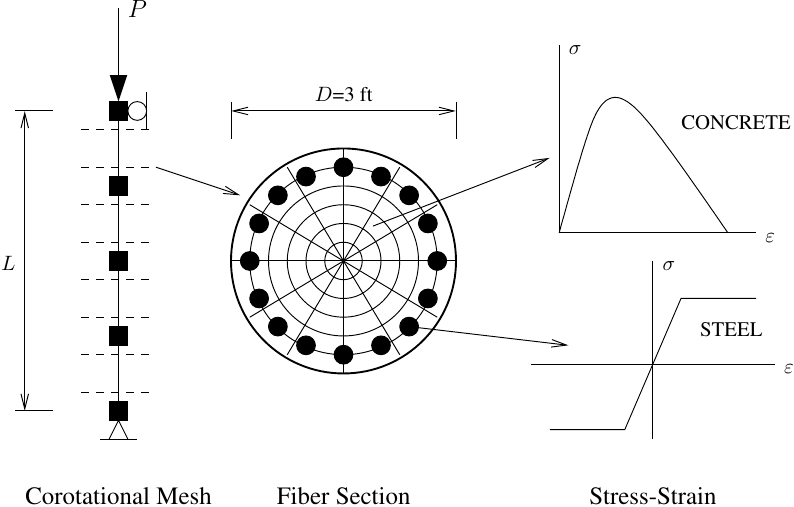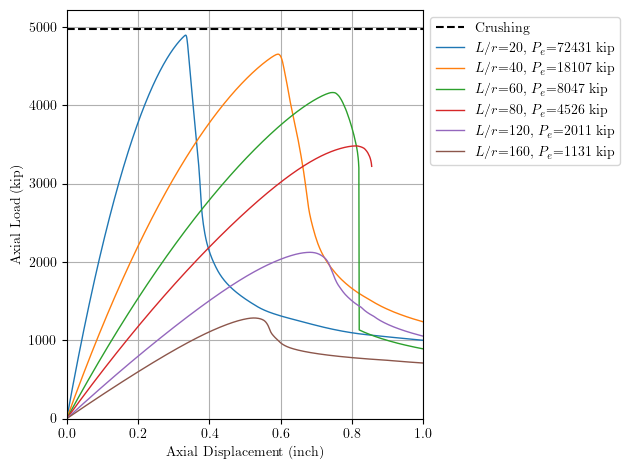OpenSees Cloud
OpenSees AMI
Slender Things
Original Post - 04 Nov 2021 - Michael H. Scott
Show your support at Buy Me a Coffee.
Using fiber sections and the corotational geometric transformation is an easy way to simulate combined material and geometric nonlinearity in column members. A previous post examined this approach for steel columns where residual stresses play an important role in the axial load capacity.
In this post, I will show the corotational mesh approach for non-sway reinforced concrete columns.
The column cross-section is 3 ft diameter with 4000 psi concrete and
Grade 60 steel. The fibers in the cross-section use Concrete01 and
Steel01 (EPP) and the confining effects of transverse steel are omitted
for simplicity. With 16 #9 bars, the longitudinal reinforcing ratio is
just over 1.5%.
With the column cross-section and a specified value of L/D (the ratio of column length to column diameter), a corotational mesh of four displacement-based elements is created with an initial out of straightness equal to L/1000. A reference vertical load is applied at the top of the column, then displacement control analysis on the vertical DOF provides the axial load-displacement relationship.

The analysis is conducted for L/D=5,10,15,20,30,40. For this 3 ft diameter section, the radius of gyration is 9 inch, making the corresponding L/r=20,40,60,80,120,160. Yeah, I know, it gets kinda slender. The axial load-displacement results are shown below along with the axial crushing strength and the Euler buckling load for each L/r, assuming Ieff=0.8Ig.

The results follow the expected behavior–as the column slenderness increases, the axial load capacity decreases due to inelastic buckling. For this particular column section, elastic Euler buckling starts to control for L/r somewhere between 80 and 120.
Here is a presentation where I discuss the column analysis from the early stages of a project with Mark Denavit. In preparing this post, I realized I used the wrong number of bars (12 instead of 16) for the analysis, thus the discrepancy with crushing strength at 04:33.
